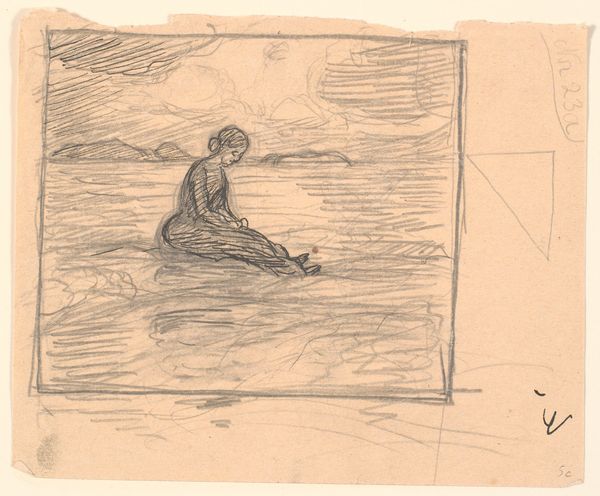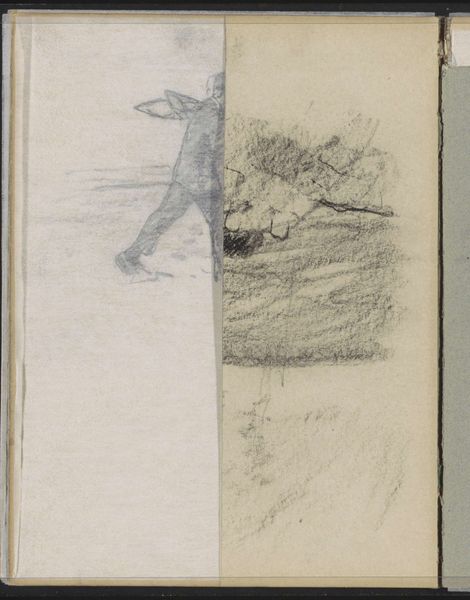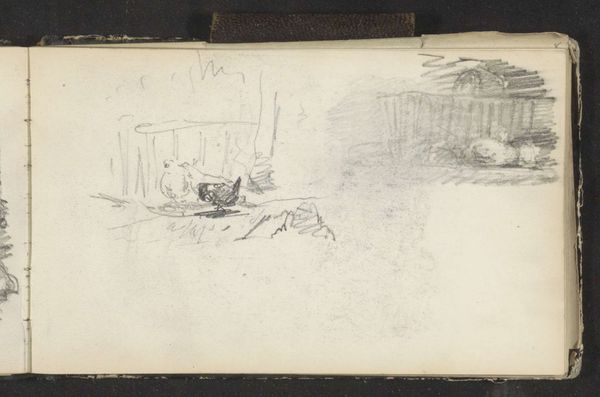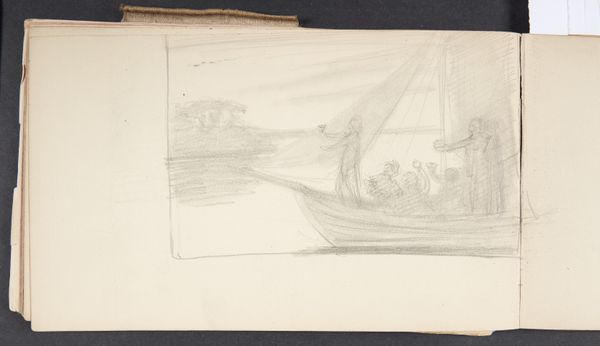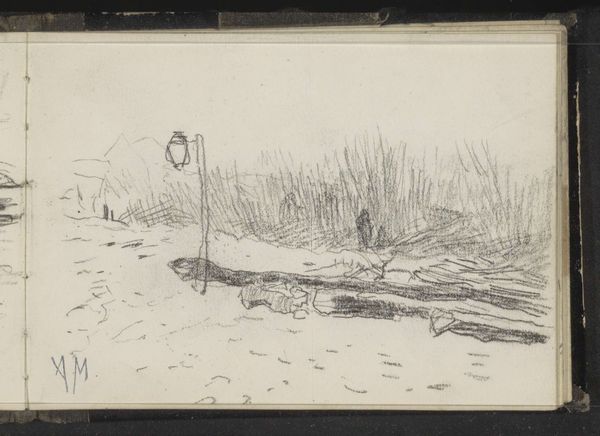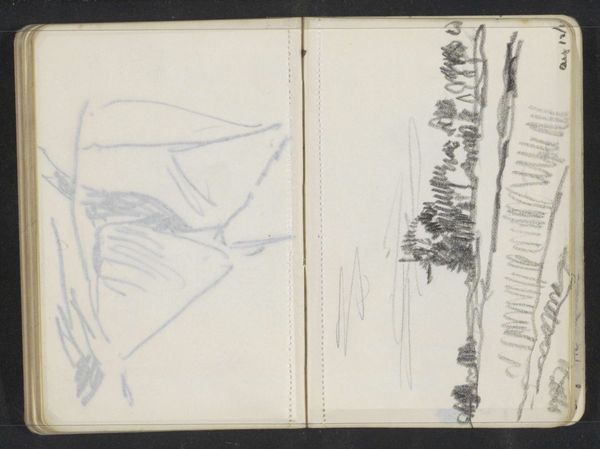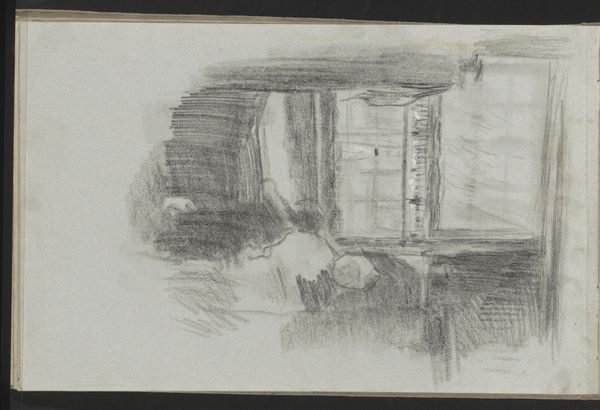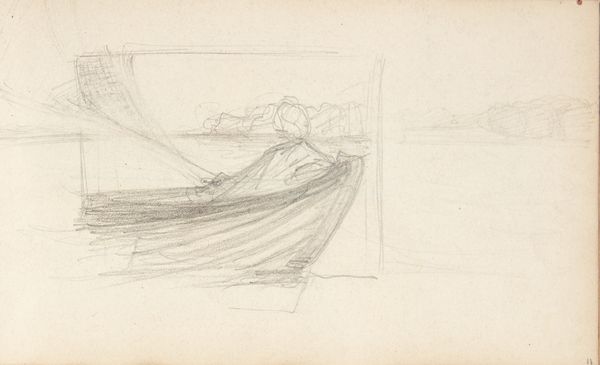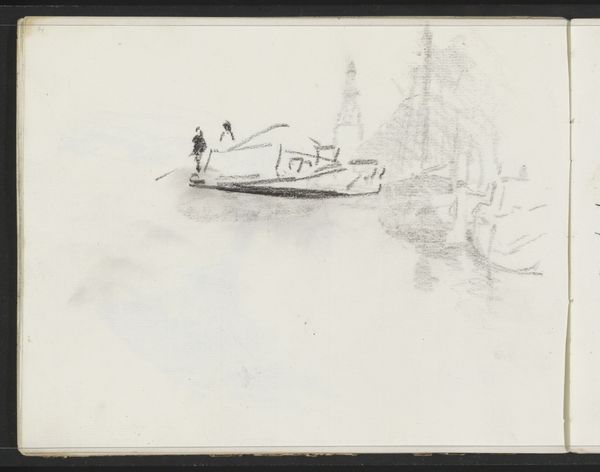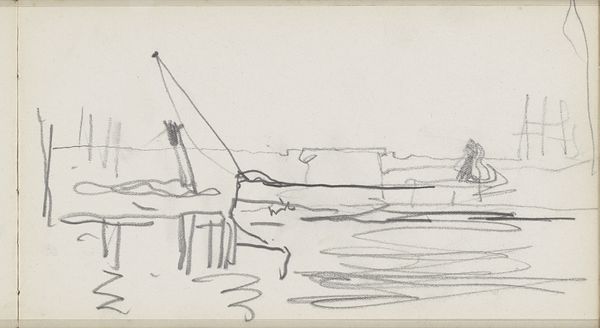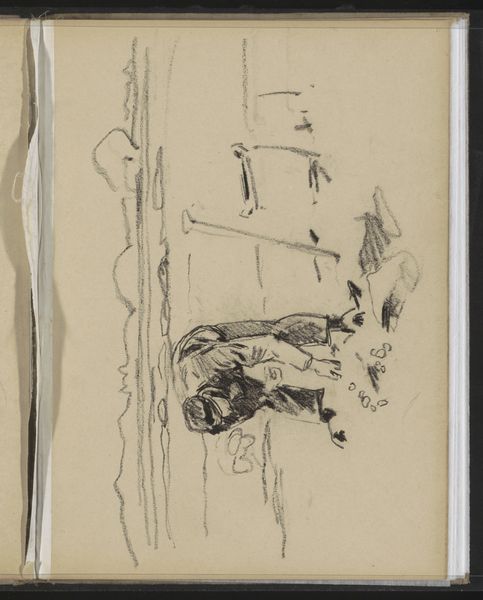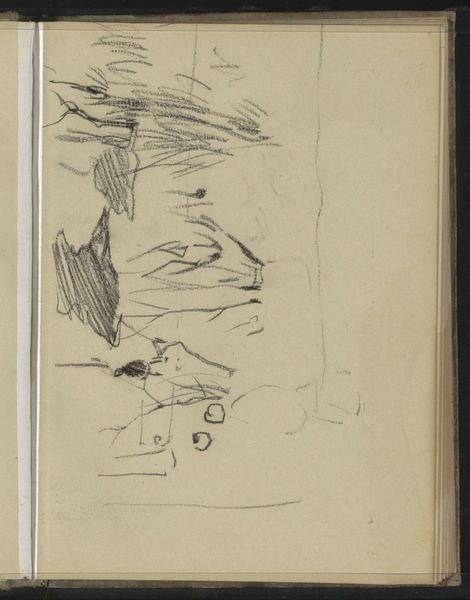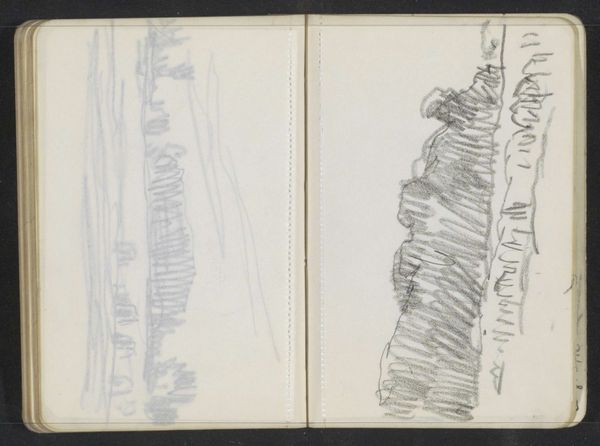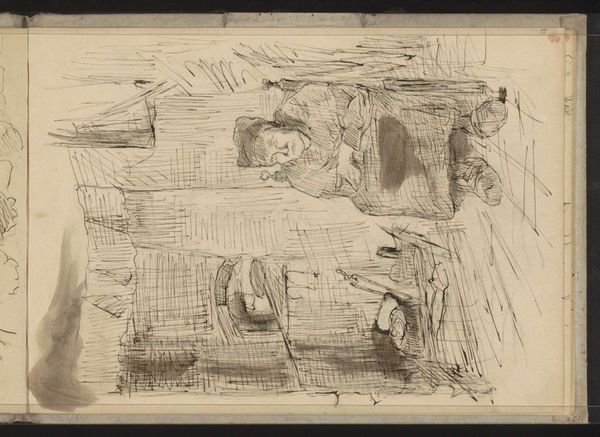
Kvinde i en sejlbåd samt sejlbåd på vandet ved aftenstid 1897
0:00
0:00
Dimensions: 121 mm (height) x 207 mm (width) x 90 mm (depth) (monteringsmaal), 126 mm (height) x 207 mm (width) (bladmaal)
Curator: Immediately, I feel this deep sense of solitude emanating from the pencil strokes; a gentle melancholia permeates this study. Editor: It's evocative, isn't it? This drawing by Agnes Slott-Møller, titled "Kvinde i en sejlbåd samt sejlbåd på vandet ved aftenstid," dates back to 1897. Curator: I find the implied textures fascinating. Note the contrast between the choppy, expressive water sketched on the left page and the far right page including elements painted in watercolor; the calm solidity of the sailboat, set off with a hint of impasto. The pencil on paper allows her to capture that dichotomy. Editor: Absolutely. Agnes Slott-Møller was working at a fascinating time in Danish art. This sketch, held by the SMK—Statens Museum for Kunst—reflects the burgeoning romanticism within Scandinavian painting, capturing an introspective mood using maritime settings. I wonder what was the significance of romanticism to Danish people. Curator: And notice the figure—seemingly isolated, lost in thought, perhaps burdened by some internal conflict or perhaps a very contemporary rendering of a new woman. How was this type of character received back then? Did the representation contribute to any sort of agency? Editor: It’s fascinating how she subtly critiques societal expectations through seemingly serene scenes, while making sailboats. What can this piece tells us about Agnes' life and marriage in connection to production and cultural context? Was she allowed at art institutions for example? Curator: These are just some preliminary sketches so that would be difficult to determine, although I share your enthusiasm. The romantic subjectivities can be approached and further inspected now having your cultural references. Editor: The act of capturing these fleeting moments, of observing life along the shore and, I suppose, revealing in its cultural context— it feels surprisingly modern, doesn't it? Curator: Very much so. Thinking about the use of pencil and her style makes me wonder the degree of accessibility for female artists to academic resources. A drawing like this, while romantic and visually arresting, raises fundamental questions about its time. Editor: Exactly! This short insight surely brings a wider panorama for approaching this type of artistry.
Comments
No comments
Be the first to comment and join the conversation on the ultimate creative platform.
